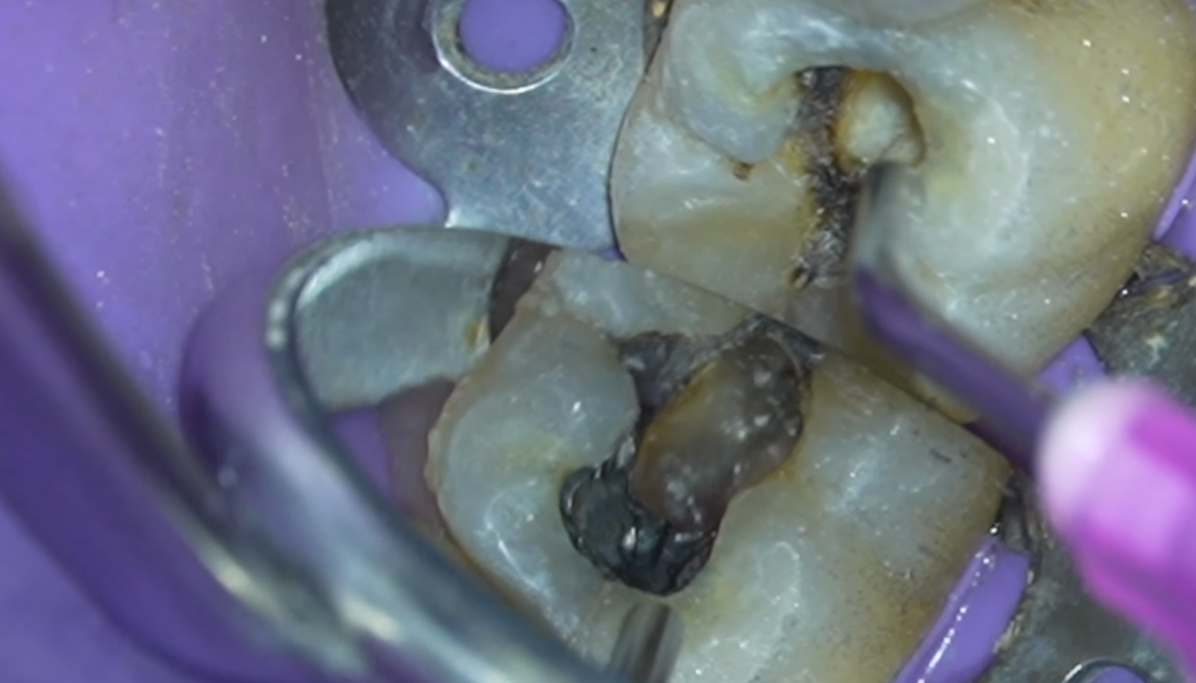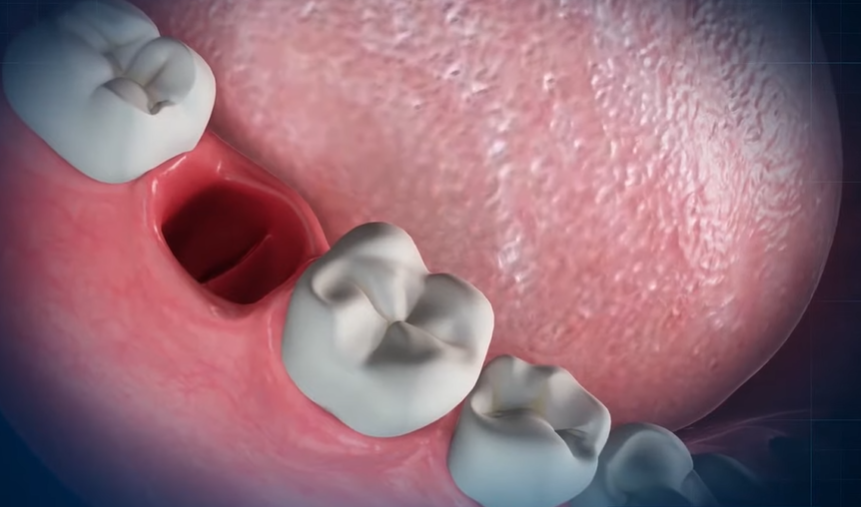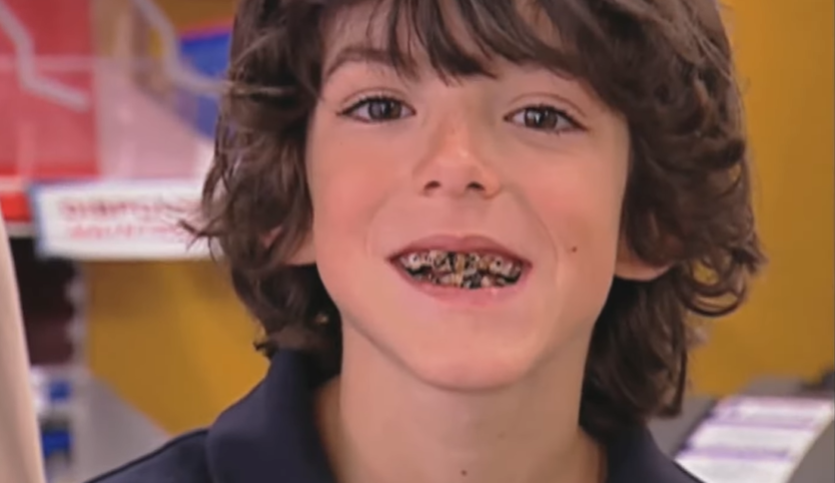If you buy through links on our site, we may earn a small affiliate commission to help support the blog - at no extra cost to you. It never influences our product selection process. Thank you!
Discovering a hole in your dental crown can be alarming, but what should you do about it? This common dental issue requires prompt attention to prevent further complications and protect your oral health.
When faced with a damaged crown, you’ll need to understand your treatment options. While minor damage might seem repairable, most dental professionals recommend complete replacement rather than attempting to patch the hole. This is because a compromised crown no longer provides adequate protection for the underlying tooth structure, potentially leading to decay, discomfort, and more extensive dental work if left unaddressed.
Understanding Dental Crowns and Their Function
Dental crowns serve as protective caps placed over damaged or weakened teeth to restore their shape, size, strength, and appearance. These custom-made restorations completely encase the visible portion of a tooth above the gum line, providing a durable and functional solution for teeth that can’t be effectively repaired with fillings or other treatments. Crowns are typically made from materials like porcelain, ceramic, metal alloys, or a combination of these materials to ensure both durability and aesthetic appeal.
The primary purpose of a dental crown is to protect and strengthen a compromised tooth. Crowns distribute biting forces evenly across the tooth structure, preventing further damage and allowing normal chewing function. They’re commonly used following root canal therapy, to cover dental implants, or to support a dental bridge. Many patients receive crowns after experiencing important tooth decay, fractures, or wear that has damaged the natural tooth structure beyond what a simple filling can repair.
While dental crowns are designed to be durable, they aren’t indestructible. The average lifespan of a well-maintained crown ranges from 5-15 years depending on factors like oral hygiene practices, bite forces, and the material used. Patients who grind their teeth, bite hard objects, or neglect regular dental checkups may experience issues with their crowns, including the development of holes or cracks that compromise their protective function.
Just last month, a patient came in with a small hole in her porcelain crown that she’d had for nearly eight years. She’d noticed some sensitivity when drinking cold beverages and wisely scheduled an appointment right away. Upon examination, it was clear that the crown’s integrity had been compromised, and waiting longer would have risked damage to the underlying tooth structure. This proactive approach saved her from potentially needing more extensive treatment like a root canal.
Crowns are essential for maintaining the overall health of your mouth when natural teeth have been significantly damaged. They prevent bacteria from entering compromised teeth, stop the spread of decay, and maintain proper spacing between teeth. Without crown protection, weakened teeth remain vulnerable to further deterioration, which can lead to tooth loss and affect adjacent teeth. Regular dental check-ups allow for early detection of any issues with your crowns before they develop into more serious problems.
Common Causes of Holes in Dental Crowns

Dental crown holes develop when visible damage or gaps form in the crown material, exposing the underlying tooth structure to bacteria and increasing decay risk. These issues compromise the crown’s protective function and often lead to discomfort if not addressed promptly.
Wear and Tear Over Time
Dental crowns endure constant stress from daily chewing and biting forces that gradually weaken their structure. Your crown materials—whether porcelain, ceramic, or metal—deteriorate naturally over years of use even though their durability. Microscopic cracks often form first, eventually developing into visible holes as the crown continues to bear functional loads. This natural degradation process accelerates in patients who clench or grind their teeth, creating excessive pressure that can compromise even well-made crowns.
Poor Dental Hygiene
Inadequate oral care remains one of the primary contributors to holes forming in dental crowns. Your natural tooth beneath the crown stays vulnerable to decay, particularly at the margin where the crown meets the tooth. Plaque accumulation and bacterial invasion at these junction points can erode the tooth structure underneath, creating weak spots that undermine the crown’s foundation. Regular brushing, flossing, and professional cleanings help prevent bacterial buildup that leads to these structural problems.
Manufacturing Defects
Crown quality depends significantly on proper fabrication and placement techniques. Defects during the manufacturing process or improper fitting by your dentist create weak spots vulnerable to damage. Gaps from faulty cementation allow bacteria to infiltrate between the crown and tooth, promoting decay that compromises the restoration’s integrity. Poor bite alignment from improperly designed crowns distributes force unevenly, concentrating pressure on exact areas that eventually develop holes or cracks. These manufacturing issues often manifest as premature crown failure within the first few years after placement.
| Cause of Crown Damage | Percentage of Cases | Average Time to Develop |
|---|---|---|
| Wear and tear | 35% | 5-7 years |
| Poor oral hygiene | 30% | 2-4 years |
| Manufacturing defects | 20% | 1-3 years |
| Trauma/accidents | 15% | Immediate to 1 year |
Signs and Symptoms of a Damaged Crown
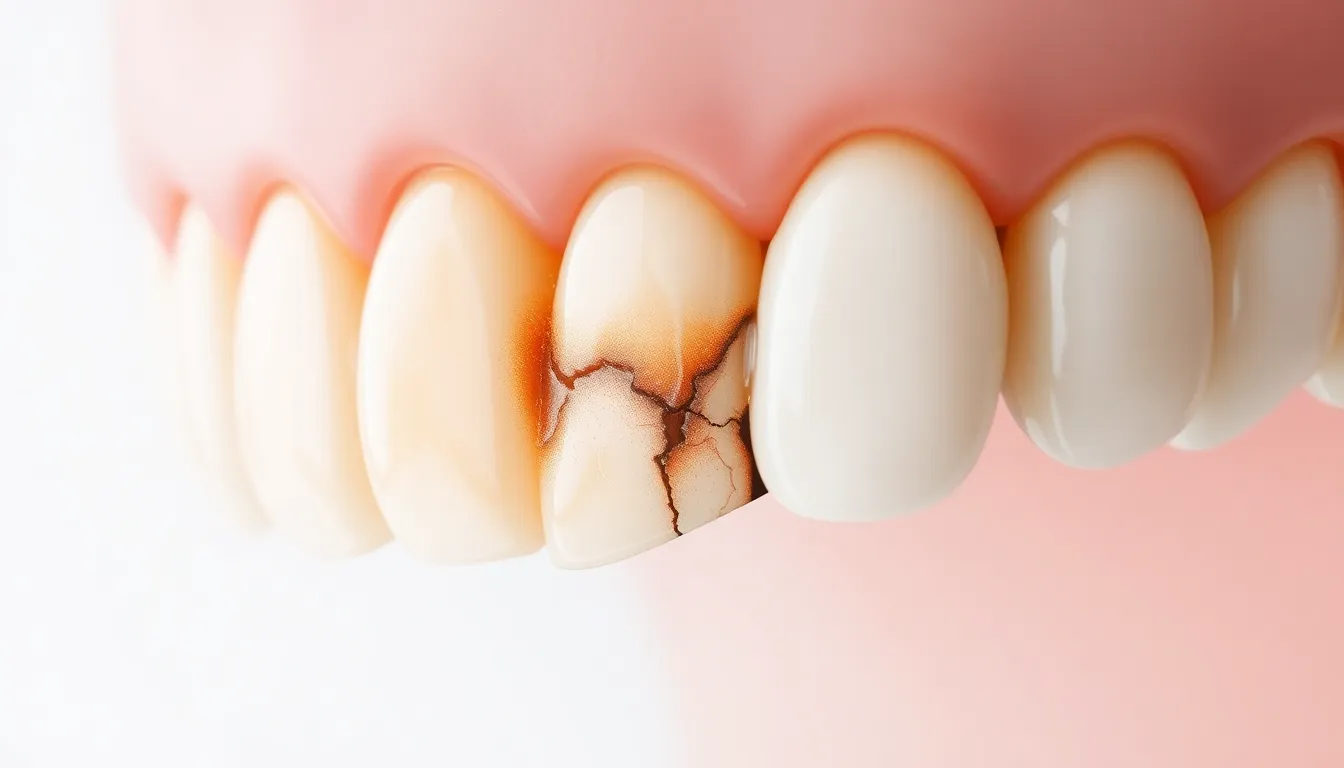
Recognizing the signs of a damaged dental crown early helps prevent complications and protect your oral health. Crown damage manifests through various symptoms that range from subtle discomfort to more obvious visual changes.
Visual Indicators
Visible cracks or chips around the crown’s edges serve as common warning signs of damage or beginning failure. These imperfections can progress into holes or gaps that allow harmful bacteria to infiltrate beneath the crown. Dark spots or discoloration near the gum line at the crown’s base often indicate decay underneath, sometimes appearing as a shadowy area or hole-like formation. You might also notice the crown shifting or becoming loose, no longer fitting securely against your tooth, which exposes the underlying tooth structure to potential damage or decay.
One patient recently shared: “I noticed a small dark line at the edge of my crown while flossing. I thought it was just a shadow, but my dentist confirmed it was the beginning of a crack that needed immediate attention.”
Pain and Sensitivity
Pain or discomfort in the crowned tooth area typically signals an issue that requires attention. This discomfort stems from decay, gum infection, or compromise of the tooth beneath the crown. Heightened sensitivity to temperature extremes or sweetness, especially if it’s a new development, indicates potential crown damage. When sensitivity lingers after the stimulus is removed, decay may have reached deeper layers of the tooth under the crown. Experiencing pain during chewing or biting often occurs with loose crowns or decaying teeth underneath, suggesting compromised structural integrity.
Many patients also report swelling, tenderness, or inflammation of the gums surrounding the damaged crown. These symptoms typically indicate bacterial infection or irritation from microorganisms entering through cracks or holes in the crown. A persistent foul taste or bad breath localized around the crowned tooth commonly signals bacterial infection or decay beneath the crown causing an unpleasant odor.
Potential Risks of Untreated Crown Damage
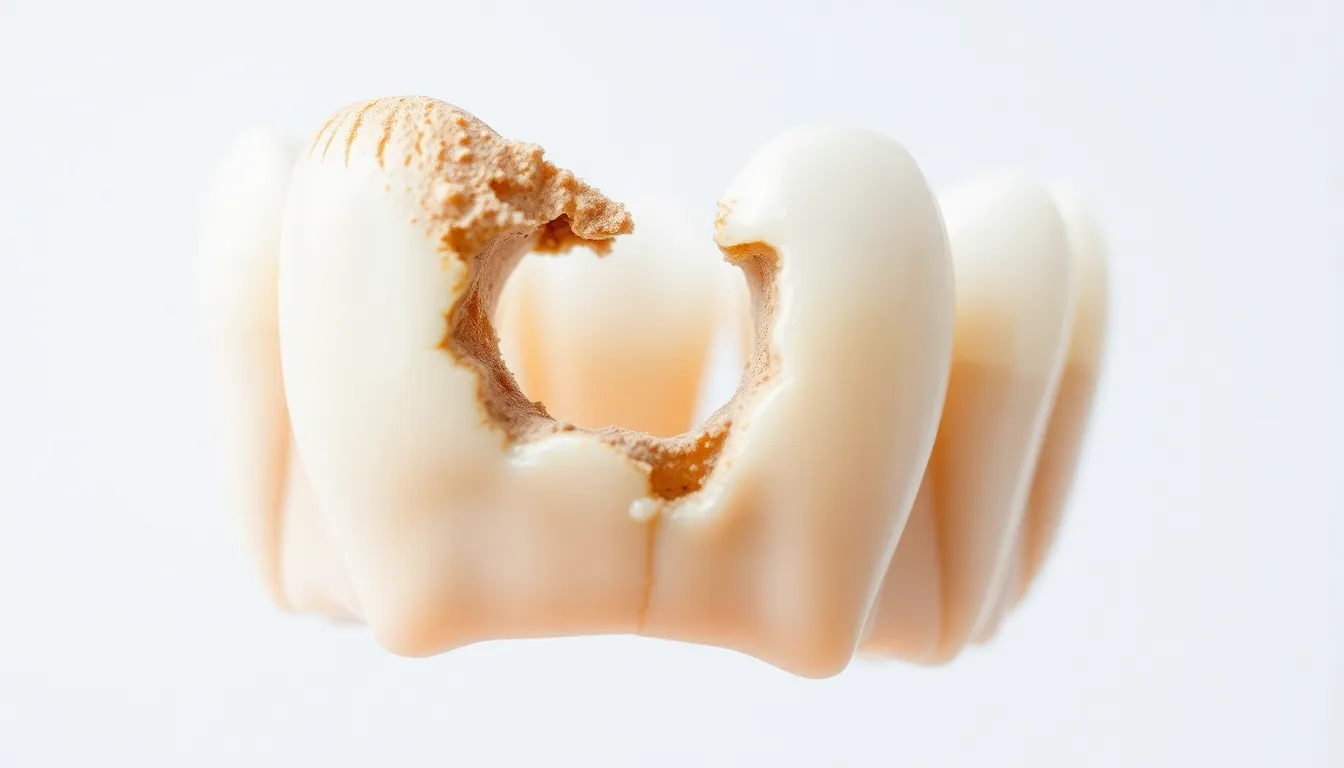
A hole in your dental crown creates a gap that exposes the underlying tooth structure to important risks. Ignoring crown damage can lead to several serious oral health complications that extend beyond mere cosmetic concerns.
Tooth Decay and Infection
Crown damage allows bacteria and food particles to penetrate beneath the crown and reach the vulnerable tooth structure. This bacterial invasion compromises the protective barrier your crown provides, creating an ideal environment for decay to develop in the exposed areas. Bacteria that infiltrate deeply enough can cause inflammation around the tooth root and potentially lead to abscess formation. Your risk of needing root canal therapy increases substantially when infection spreads through the hole in your crown to the tooth’s pulp. The decay process accelerates in these situations because the protected environment under the crown can trap bacteria against the tooth surface without being disturbed by regular brushing.
Further Crown Deterioration
A hole in your crown significantly weakens its structural integrity, creating a domino effect of escalating damage. Daily biting forces and normal wear gradually enlarge the initial hole, causing cracks and fractures to spread throughout the crown material. This progressive deterioration often results in the crown becoming loose or completely detaching from your tooth. Crown damage also frequently irritates surrounding gum tissue, potentially triggering inflammation and gum recession that leads to additional sensitivity and pain. Improper fit caused by crown damage can disrupt your bite alignment, placing excessive pressure on neighboring teeth and causing discomfort or accelerated tooth wear over time.
Treatment Options for a Hole in Your Crown
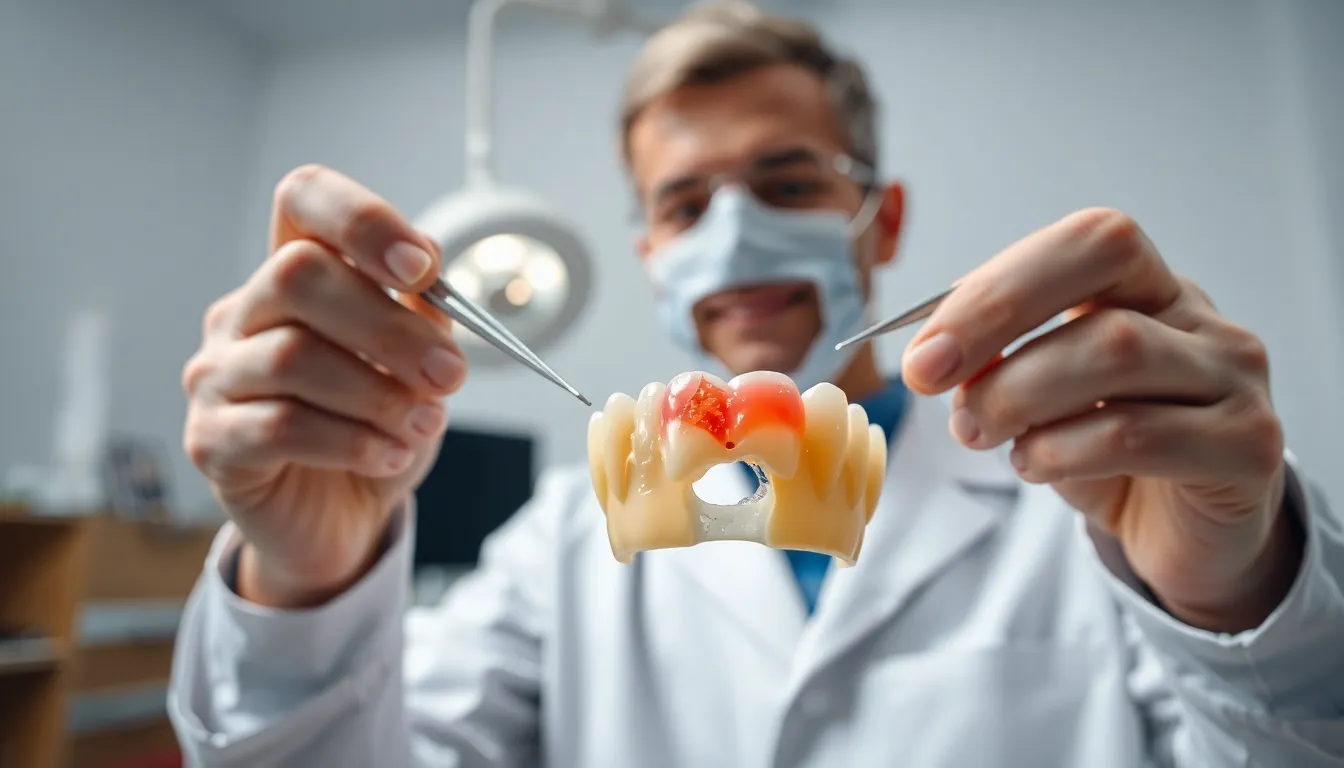
A hole in a dental crown indicates damage to the crown material, exposing the underlying tooth and potentially causing discomfort or further dental issues. Treatment options vary depending on the extent of the damage, with several approaches available to address this common dental problem.
Dental Bonding and Repairs
For minor holes or chips in a crown, dental bonding offers a less invasive solution to restore function. This procedure involves applying a tooth-colored resin to the damaged area, then curing it to rebuild the crown’s shape. Dental bonding works particularly well for small defects where the overall structural integrity of the crown remains intact. The process is relatively quick, often completed in a single visit, and preserves most of the original crown. Though effective for minor damage, bonding isn’t suitable for large holes or extensively compromised crowns.
Crown Replacement
Important damage to a dental crown typically necessitates complete replacement rather than repair. When the hole is large or the crown is structurally compromised, your dentist will remove the damaged crown and take an impression of the tooth to create a custom-fit replacement. This approach ensures proper protection of the underlying tooth and restores full functionality. Crown replacement becomes essential when the damage exposes too much of the underlying tooth structure, putting it at risk for decay or infection. The process generally requires two visits – one to remove the damaged crown and place a temporary one, and another to fit the permanent replacement.
Temporary Answers
While awaiting permanent treatment for a damaged crown, temporary measures can provide short-term protection. Dental adhesives or temporary crown cement help shield the tooth and reduce sensitivity during the interim period. Cleaning the crown gently before applying any temporary material proves important for preventing further complications. These answers offer temporary relief but shouldn’t replace professional dental treatment. Over-the-counter dental wax can also be applied to smooth rough edges of a damaged crown, preventing irritation to your tongue and cheeks until you can see your dentist.
When to Seek Emergency Dental Care
A hole in your dental crown demands immediate attention when exact symptoms emerge. Pain or sensitivity indicates exposure of the inner tooth layers, requiring prompt treatment to prevent further damage. Your crowned tooth might suddenly react strongly to hot, cold, or pressure, signaling that protective layers have been compromised.
Crown damage or dislodgement represents another urgent scenario. Holes can significantly weaken the crown structure, potentially leading to cracks, chips, or complete detachment. Quick dental intervention prevents additional complications that might affect the underlying tooth structure.
Swelling or signs of infection around the crowned tooth shouldn’t be ignored. Persistent pain accompanied by swelling in the gum or face near the affected tooth often signals an infection developing beneath the damaged crown. These symptoms require immediate professional attention to prevent the infection from spreading.
Bleeding or trauma involving your crowned tooth necessitates emergency care. Physical impacts can damage both the crown and the tooth underneath, creating complications that worsen without proper treatment. Dental trauma often causes bleeding and requires specialized care to assess the full extent of the damage.
While waiting for your emergency appointment, you can take several immediate steps. Gently rinse your mouth with warm water to clean the affected area and use dental floss carefully to remove any food debris lodged around the crown. Avoiding sticky, hard, or sugary foods prevents further damage to the compromised crown. Over-the-counter pain relievers can help manage discomfort, but never place aspirin directly on your gums as this can cause tissue damage.
Preventive Measures to Protect Your Dental Crown
Protecting your dental crown from damage requires consistent preventive care and awareness of potential risks. Regular dental checkups every six months allow professionals to monitor your crown’s condition and address small issues before they develop into larger problems. These routine visits are crucial for maintaining not only your crown but your overall oral health.
1. Maintain Proper Oral Hygiene
Brushing twice daily with fluoride toothpaste using a soft-bristled toothbrush keeps your crown and surrounding teeth clean. Gentle techniques prevent damage while effectively removing plaque and food particles that could lead to decay. Flossing daily around the crown is essential to remove debris that brushing alone can’t reach. An antibacterial mouthwash reduces harmful bacteria that might cause decay at the crown margins.
2. Avoid Hard and Sticky Foods
Certain foods pose important risks to your dental crown’s integrity. Hard items like ice, nuts, and hard candies can crack or chip your crown when you bite down. Sticky foods such as caramel or chewing gum might pull at your crown and potentially dislodge it. Making conscious food choices helps extend your crown’s lifespan and prevents unexpected damage.
3. Manage Teeth Grinding
Teeth grinding puts excessive pressure on dental crowns, potentially causing cracks or holes over time. Custom night guards provide a protective barrier between your upper and lower teeth while sleeping. Many patients report important improvement in crown longevity after addressing their grinding habits. Stress reduction techniques may also help minimize unconscious grinding behaviors that damage dental work.
4. Regular Dental Checkups
Professional dental examinations detect early signs of crown deterioration that aren’t visible to the untrained eye. Your dentist thoroughly assesses the fit and condition of your crown during these visits. Professional cleanings remove hardened plaque (tartar) from around crown margins where decay often begins. Early intervention prevents the need for more extensive and expensive treatments later.
5. Healthy Diet and Lifestyle
Limiting sugary and acidic foods reduces the risk of decay around your crown margins. A balanced diet rich in vitamins and minerals supports overall oral health and strengthens natural tooth structure. Avoiding tobacco products and excessive alcohol consumption helps maintain healthy gums around your crown. Proper nutrition contributes significantly to the longevity of all dental restorations.
6. Use Customized Oral Care Products
Specialized toothbrushes designed for sensitive teeth or dental restorations clean effectively without causing damage. Non-abrasive toothpastes prevent unnecessary wear on crown materials while still providing cleaning benefits. Your dentist can recommend exact products customized to your unique oral health needs and crown material.
Conclusion
A hole in your dental crown requires prompt attention to prevent further complications. Whether you need a simple repair or complete replacement your dentist can guide you toward the best solution for your exact situation.
Don’t wait until minor damage evolves into serious dental issues like infection decay or crown failure. By recognizing warning signs early seeking timely professional care and following preventive measures you’ll protect not only your crown but your overall oral health.
Remember that while crowns are durable they’re not indestructible. Regular dental checkups proper oral hygiene and mindful eating habits will help extend their lifespan and maintain your confident smile for years to come.
Frequently Asked Questions
What should I do if I find a hole in my dental crown?
If you discover a hole in your dental crown, contact your dentist immediately. Don’t delay seeking professional care as the damage can worsen and expose the underlying tooth to bacteria and decay. While waiting for your appointment, avoid chewing on that side of your mouth and keep the area clean. Remember that prompt attention is crucial to prevent more serious complications that could require extensive dental work.
Can a dental crown with a hole be repaired?
While minor damage to a dental crown might seem repairable, dentists typically recommend complete replacement. This is because even a small hole compromises the crown’s protective function. Dental bonding might be an option for very minor damage, but it’s usually a temporary solution. A new crown ensures proper protection and function of the underlying tooth structure and helps prevent further complications.
What causes holes to develop in dental crowns?
Holes in dental crowns typically develop from wear and tear (35% of cases), poor oral hygiene (30%), manufacturing defects (20%), or trauma/accidents (15%). Daily chewing places significant stress on crowns, gradually weakening their structure. Inadequate oral care can lead to decay at the crown margins. Sometimes, improper fitting or fabrication creates vulnerable spots susceptible to damage. Understanding these causes helps in maintaining crown integrity.
How long should a dental crown last before developing problems?
Dental crowns typically last between 5-15 years with proper care. Material type affects longevity: porcelain-fused-to-metal crowns generally last 5-7 years, all-porcelain crowns 5-15 years, and gold alloy crowns 10-15+ years. Factors affecting durability include oral hygiene practices, teeth grinding habits, diet choices, and regular dental check-ups. Even with excellent care, no crown lasts forever and may eventually need replacement.
What are the signs that my crown is damaged?
Signs of a damaged crown include visible cracks or chips, dark spots near the gum line, or a loose-feeling crown. You may experience pain or sensitivity, especially to hot, cold, or sweet items. Other symptoms include swelling or tenderness around the crowned tooth, bad breath, or an uneven bite. If you notice any of these signs, contact your dentist promptly for evaluation.
What risks do I face if I don’t treat a hole in my crown?
Ignoring a hole in your dental crown can lead to serious complications. The damaged crown exposes the underlying tooth to decay and infection as bacteria penetrate beneath it. This may result in inflammation, abscess formation, and increased need for root canal therapy. The crown’s structural integrity weakens, potentially causing complete failure. Additionally, gum inflammation and bite misalignment can develop, affecting your overall oral health.
Is a damaged crown considered a dental emergency?
A damaged crown can be considered a dental emergency, particularly if you’re experiencing severe pain, signs of infection (swelling, fever), or if the crown has completely fallen off exposing a vulnerable tooth. While not all crown issues require same-day treatment, prompt attention within 1-2 days is advisable to prevent further damage to the underlying tooth structure and avoid more extensive treatment later.
How can I temporarily manage a crown with a hole until my appointment?
While awaiting your dental appointment, you can temporarily manage a crown with a hole by rinsing with warm salt water to keep the area clean. Avoid chewing on that side and stay away from sticky, hard, or extremely hot/cold foods. Over-the-counter dental cements or wax can temporarily cover the hole, but these are strictly short-term solutions. Take over-the-counter pain relievers if needed for discomfort.
How much does it cost to replace a damaged crown?
The cost to replace a damaged crown typically ranges from $800 to $2,500, depending on the material used (porcelain, ceramic, metal, or zirconia), geographic location, dentist’s expertise, and whether additional procedures are needed. Insurance may cover 50-70% of the cost if the replacement is deemed medically necessary. Some dental offices offer payment plans or financing options to help manage out-of-pocket expenses.
How can I prevent damage to my dental crowns?
Prevent damage to dental crowns by maintaining regular six-month dental checkups and practicing thorough oral hygiene (brushing twice daily and flossing). Avoid chewing hard objects like ice or opening packages with your teeth. If you grind your teeth, wear a nightguard. Choose tooth-friendly foods and limit sugary items. Use non-abrasive toothpaste and consider a soft-bristled toothbrush to protect your crown’s integrity.


